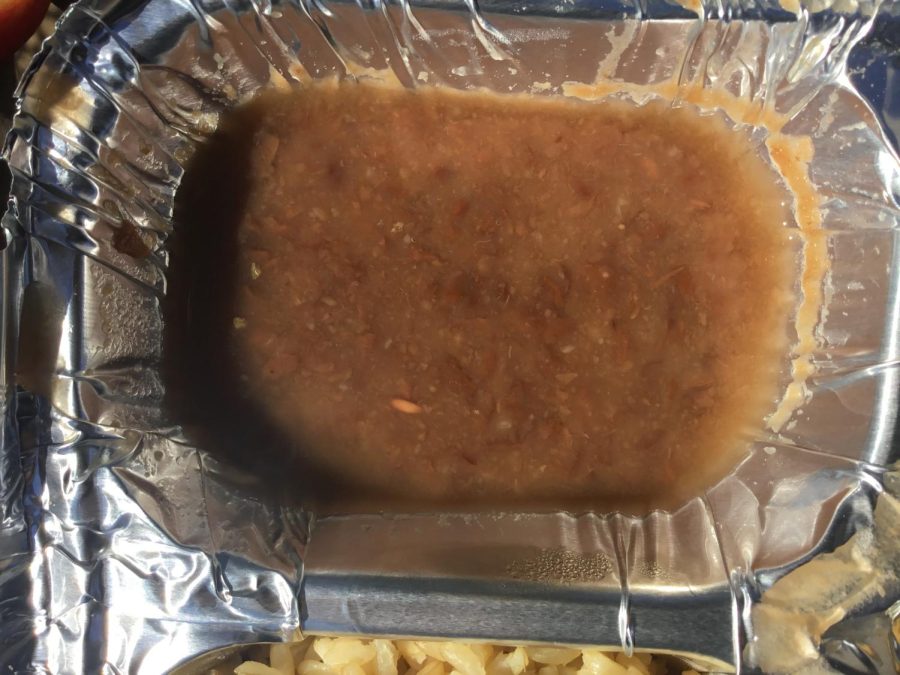DVUSD lacks in food quality and nutrition
“Freshly” served beans in a metal container from the OHS cafeteria.
May 15, 2022
Deer Valley Unified School District has been spending very little effort or money on the school food. The only reason DVUSD even considered giving out free food was because the state of Arizona mandated it. Not only do we see this in Deer Valley, but we see it in Arizona and the United States as a whole, and the effect of this lack of effort from the district is far more detrimental than most think.
Many students depend on the district and the school for food availability and cannot afford anything else, which puts the school in a position where they decide the quality of the food that a lot of students put in their body. Unfortunately for those who do depend on the school food for nourishment, the school, the district, and the United States as a whole all spend and contribute as little as possible on that necessary nourishment.
These claims have not only been made, but have been substantiated by the district themselves. According to the Auditor General District Spending Report for 2021, DVUSD spends $0.22 less on each meal than its peers, with the district spending a total of $3.35 per meal and the peer average being $3.57 per meal. “Peers” are the school districts nearby DVUSD. In the conclusions section of the report, it was even admitted that DVUSD spends less on each student than its peer districts and the State of Arizona as a whole.

Terrifying statistics aside, students can notice the low quality of the school food by just looking at it or eating. The food is often cold, rotten, or liquid. To name a few, the beans leave an erosion line when exposed to sunlight, the apple slices are bruised and tough, and the chicken has caused food poisoning. Because of the low quality, the students often feel unfulfilled in terms of appetite and cannot participate to the best of their abilities in academic areas.
This sad reality of low spending and lower quality is replicated all over the United States. Many people try to give some consideration to the United States and schools, especially OHS, that since the food is free, they accept that the food is of lower quality. The rest of the world disagrees. In 2005, the United Nations voted on whether or not humans had a right to food, and only two nations voted no: Israel and the United States.
The students are not at fault, the food service workers are not at fault, the teachers are not at fault, and the parents are not at fault. This leaves few bodies to blame, but those at fault are clear—the administration, the district, and the government. It is the responsibility of the governors in a civilized society, especially in a federation, to provide the governed with enough to sustain themselves, and our government is failing to do so, and failing by such a large margin that anyone can see it. The government should better fund schools, who should then better fund nutrition in schools. The issue of nutrition of the youth is being mishandled by the district; we need change and we need it now.




